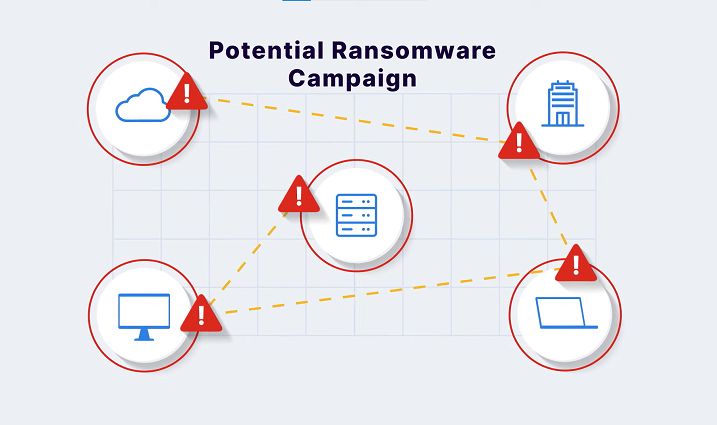Ransomware attacks have been on the rise in recent years, causing significant disruptions and costs to businesses and organizations around the world. As cybercriminals become more sophisticated in their methods, it is critical for companies to be proactive in securing their systems against these threats. In this article, we will discuss three of the most effective strategies that information security experts recommend for preventing successful ransomware attacks.
1. Keep All Software Up-To-Date
One of the most important things a company can do to prevent ransomware is to ensure that all software and applications are kept completely up-to-date with the latest patches and versions. Cybercriminals are constantly searching for and exploiting vulnerabilities in common software programs like operating systems, web browsers, office applications, and enterprise software. When vendors become aware of flaws in their software, they quickly release patches to address those weaknesses before hackers can take advantage of them. Unfortunately, many organizations delay or overlook critically important software updates, giving attackers an open door into their systems.
To prevent ransomware infections through unpatched software, companies need to commit to applying updates as soon as practically possible after they are released by vendors. This includes operating system and firmware updates, browser updates, updates to Adobe applications, Java, and other third-party software. The use of an automated patch management system can help ensure a timely and consistent patching process across all endpoints and servers in an organization’s environment.
It is also prudent to review software update logs regularly to confirm updates were installed successfully throughout the company. Special care should be taken to patch software that interacts with file systems and processes, such as Office applications, PDF readers, backup frameworks, and compression utilities since these are commonly targeted for exploitation by ransomware threat actors.
2. Limit Privileges and Access Controls
Since ransomware aims to traverse systems and encrypt as many files and resources as possible, another key prevention strategy is to limit privileges and carefully control access. Cybercriminals often obtain elevated permissions in networks through exploits or stolen credentials, which allows their malicious software extensive reach. Restricting privileges limits the scope of ransomware infections.
IT departments should audit rights and permissions periodically to ensure users and processes only have the bare minimum access they require to perform their day-to-day duties. This includes limiting administrative privileges to a small subset of trusted users and leveraging the principle of least privilege. Unnecessary application permissions should also be revoked to prevent lateral movement.
In addition, it is smart to segregate and segment parts of the network and implement access controls between those zones. This makes it harder for ransomware to spread beyond its initial point of infection. Files and folders can also have granular permissions assigned to further refine access.
3. Install and Properly Configure Security Software
Antivirus software and other endpoint security tools play an integral role in protecting systems from ransomware attacks. Companies should ensure they install this software on all endpoints and servers, and that it is properly configured to maximize effectiveness. Always-on scanning and real-time protection capabilities are essential to detect and halt malicious files before they can encrypt data or propagate across the network.
It is not enough, however, to rely solely on antivirus software. A defense-in-depth approach with layered security is ideal. Organizations should consider deploying anti-ransomware specific protection to complement traditional antivirus. Modern anti-ransomware tools employ behavior-based analytics to identify ransomware behavior patterns. This allows them to stop unknown or new variants of ransomware that signature-based antivirus would miss. Endpoint Detection and Response (EDR) solutions also provide enhanced ransomware protection.
Other useful layers of security to include in a defense-in-depth strategy are email filtering, web gateway filtering, firewalls, and intrusion prevention systems. But proper configuration is key – security tools must be tuned to the organization’s specific needs and risks to perform optimally.
Other Important Ransomware Prevention Strategies
In addition to the three major strategies highlighted above, organizations should incorporate these other best practices to round out their defenses against ransomware attacks:
- Conduct cybersecurity awareness training to educate end users on ransomware risks and response.
- Back up critical data regularly and keep backups offline to avoid encryption or deletion.
- Install and properly configure host-based firewalls on endpoints.
- Disable macros in Microsoft Office documents received from outside sources.
- Ban the use of personal email and USB devices on work endpoints.
- Assess and test incident response procedures for ransomware scenarios.
Conclusion
Ransomware attacks can inflict severe disruption and high costs on affected businesses through data encryption, service downtime, investigation fees, and ransom payments. But by taking a proactive approach focused on risk reduction, companies can prevent many ransomware incidents from impacting their organization.
Keeping software up-to-date, limiting excessive permissions, deploying layered security tools, and following other best practices are proven strategies for stopping ransomware. While cybercriminals will continue innovating their tactics, organizations can get ahead of the threat by strengthening their defenses across these key areas.
Implementing these ransomware prevention best practices takes commitment and resources, but pays dividends through reduced risk, improved resilience, and peace of mind. In today’s cyber climate, every company should make ransomware preparedness a high priority to avoid becoming the next victim.

